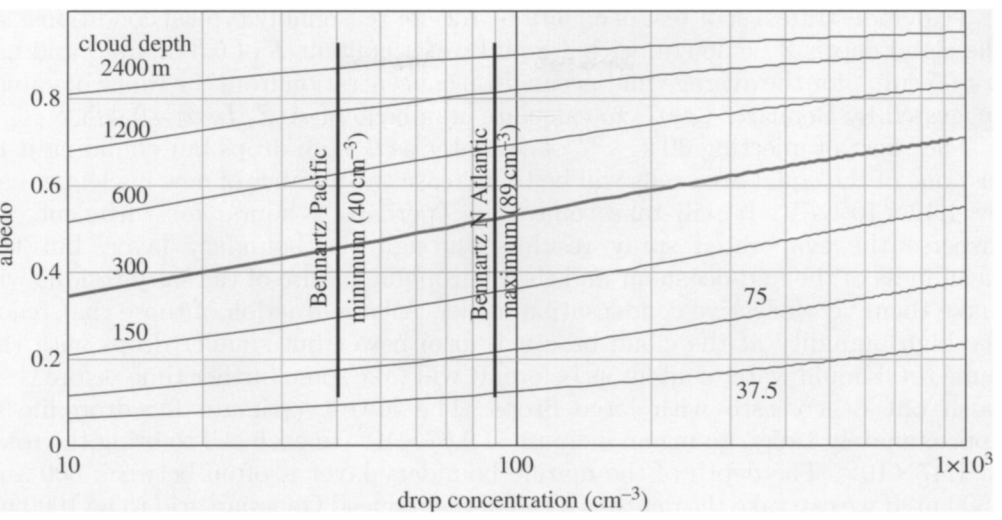However, there is something clearly missing. Something that naturally blocks sunlight away from us (mainly here, in England, for example :( ). Of course, clouds!!! However, this is not to be treated so easily. Clouds have both powers. Some allow the income of solar radiation towards the Earth and reflect infrared radiation from the Earth back to the surface (usually the role of upper cirrus clouds), therefore increasing the Earth's temperature. Others partially reflect sunlight back to space (usually the role of lower, warmer clouds), therefore increasing albedo and cooling the planet.
The goal of geoengineering is therefore creating these clouds. This procedure is known as 'marine cloud brightening' or 'cloud whitening'. How is this done? To understand this, we need to clarify something first. In order for clouds to be created, small particles called Cloud Condensation Nuclei (CCN) are needed, so that water vapour can condense around them. This is the origin of clouds.
 |
| Image showing the albedo of clouds, depending on their depth and drop concentration. Salter et al, 2008 |
However, CCN over oceans is more scarse (Albrecht, 1989) and is the place where scientists consider geoengineering can be important. CCN could be increased by spraying sea water to the air, and therefore the tiny particles of salt could be used as nuclei. Therefore clouds would be formed with more and smaller droplets. Therefore, the surface area of these droplets increases and so does the reflectivity of the clouds. (Latham et al, 2008 ). Also, these particles would be small enough so as to prevent precipitation formation, therefore creating long lasting clouds (Albrecht, 1989).
 |
| Ship in charge of spraying sea water into the air. Source. |
 |
| Trails left by ship spraying sea water to the air as photographed by NASA. |
Implementation of this technique includes airplanes or ships, using wind as the main source of distribution of CCN. This is discussed in Salter et al, 2008.
Advantages:
- This technique uses existent technology (airplanes, ships) and natural resources (sea water), therefore it could be rapidly implemented.
- Effects could be observed after one year of the implementation.
- This process occurs naturally in the environment, in processes like ocean foam and others, so risk of catastrophes are not big.
- If a negative side effect were to occur, the process can be stopped and effects would completely vanish within 10 days because of the continuous precipitation of the CCN.
- Contamination is nonexistent given that it is sea water that is directly sprayed.
Disadvantages:
- Effects are local, and therefore can produce unknown effect on water and air circulation.
- Water vapour must be continuously sprayed because of precipitation. So the cost of this procedure can be high.
- The termination of this technique conveys the same problem as the one discussed in the stratospheric aerosols. I.e, if the geoengineering is suddenly stopped, temperature will drastically increase to the value it would have had if geoengineering was never done.
No comments:
Post a Comment